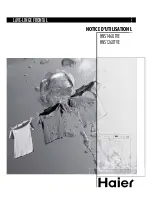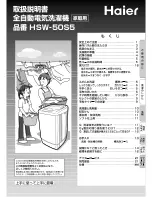
Action
Possible causes
Problem
Check that the dishes are not
blocking the spray arms.
The spray arms do not rotate.
The dishes are not clean.
Clean the spray arms and the
middle basket's spray pipe. See
the chapter Care and mainte-
nance instructions.
Spray arm holes or bearings
blocked.
Select a program with Intensive
mode (Heat Boost). The pro-
gram will use a higher tempera-
ture to dissolve grease on very
dirty dishes.
Unsuitable dishwashing pro-
gram.
Dose according to water hard-
ness. Far too much or far too lit-
tle detergent can result in poor
dishwashing results.
Incorrect detergent dosage.
Avoid large packages.
Detergent is too old. Detergent
is a perishable product.
Do not cover dishes with large
bowls or lids. Avoid placing very
tall glasses in the corners of the
baskets.
Dishes loaded incorrectly.
Load the dishes securely.
Glasses and cups have toppled
over during the program.
Check that the filter handle is
locked in the stop position.
The filters are not fitted correctly.
Check that the colored stop on
the right in the bottom drain is in
place. See the chapter Care and
maintenance instructions.
Drain pump stop missing.
Rinse off these types of food if
not starting the dishwasher im-
mediately. Use the Rinse and
hold program.
Some types of food, such as
mustard, mayonnaise, lemon,
vinegar, salt, and dressings, can
cause spots on stainless steel if
left for too long.
Spots on stainless steel or silver.
In order to avoid marks and tar-
nishing, separate dishes made
from different metals, such as
silver, stainless steel, and alu-
minum.
All stainless steel can cause
spots on silver if they come into
contact during dishwashing.
Aluminum can also cause spots
on dishes.
Table continued from last page
31
Troubleshooting












































